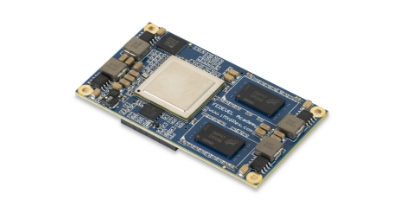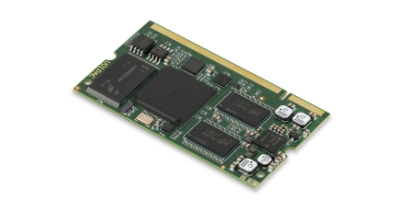Benefits of our courses
Money-back
guarantee
guarantee
If, within 30 days of placing your order, you discover that our courses do not meet your expectations, you will receive a full refund.
Experienced
instructors
instructors
Our instructors are highly experienced professionals and recognized authorities in the technical world.
Course
certificate
certificate
You will receive a course certificate upon completing coursework and finishing the course.
Practical
information
information
Our instructors share their knowledge and experience with you to make your learning process easier.
What you will learn in this course
1
Introduction
Discovering the course structure, prerequisites, and the knowledge you'll gain throughout. The course is designed to provide you with a comprehensive understanding of mixed-signal hardware design.
2
System Requirements
Defining system requirements, starting with a basic product brief and refining it to detailed specifications. Learning about USB, processor, power supply, and data converter requirements, along with analog and miscellaneous considerations. Creating an initial system block diagram.
3
Part Selection
Selecting suitable parts for your design based on derived system requirements. Basics of part selection, including finding appropriate components and using distributor part searches. Exploring microcontroller, data converter, and DC/DC converter selection, as well as analog and additional component choices. Insights into BOM consolidation, and standard value components.
4
How To Read A Datasheet and Circuit Design Introduction
Reading a datasheet effectively by understanding typical and useful sections. Exploring pin configuration, ratings, application, layout guidelines, and package information. Getting introduced to the circuit design process, including KiCad schematic examination, and the design of power supplies, microcontroller and USB, ADC and analog circuitry, and DAC and analog circuitry.
5
Schematic Design - Power Supply
Learning schematic design in KiCad.basic schematic tips for readability and sectioning, as well as the entire power supply circuitry for our prototype product. Exploring Input, RC and RLC filters, analog and digital supply, net labeling, LED current-limiting resistors, and bias generators. Decoupling capacitor theory, sizing, and placement guidelines.
6
Schematic Design - Microcontroller, USB, SWD, and ESD Protection
About the STM32 microcontroller, programming interface (SWD), and USB circuitry. Circuit protection features, such as current-limiting resistors and ESD protection. Exploring crystal oscillator circuitry, pin-out planning, pull-up resistors, and RGB LED control. Specifics of USB Type C connector and Serial Wire Debug header pinout. Choosing the right TVS diodes for ESD protection.
7
Schematic Design - ADC, DAC, and Analogue Circuitry
Finalizing ADC and DAC schematic design pages and their corresponding analogue circuitry. Creating custom symbols, and designing the ADC and DAC surrounding circuitry using datasheets. Voltage reference integration, analogue front-end design. Studying the DAC and its analogue 'rear-end' components.
8
Final Schematic Tips, Footprint Selection, and Footprint Creation
Finishing the schematic design process with annotation, electrical rules checks, and footprint selection in KiCad. Annotating multi-page schematics and performing ERCs to catch mistakes. Discovering guidelines for choosing suitable footprints, create custom footprints using datasheets, and add 3D models to enhance your design.
9
Circuit Simulation with LTSpice
Using LTSpice for circuit simulation. Getting an overview of the LTSpice GUI, placing components, voltage sources, and net names. Performing a steady-state DC analysis of an op-amp bias generator to check node voltages and currents. Simulating and analyzing the frequency response of an RC low-pass filter across a defined frequency band.
10
PCB Design - Introduction
Exploring PCB design basics and guidelines. Checking your schematics, symbols, datasheets, footprints, and simulations. Learning about PCB stack-ups, signal paths, trace guidelines, and controlled impedance traces. Understanding vias and through-holes, including properties, pad width, drill sizes, annular rings, and sizing recommendations.
11
PCB - Design Rules and Set-Up
Setting up your PCB in KiCad, define the board, layer count, stack-up, signal and power layers, and surface treatment. Understanding design rules and how to import them from a PCB manufacturer. Exploring track and via dimensions, controlled impedance calculations, and miscellaneous set-up, such as custom net class editor and violation severity settings.
12
PCB - Layout
Laying out your PCB, importing footprints, fixing broken links of the 3D models, and placing components for optimal performance. Tips and tricks for laying out mixed-signal PCBs, including boundary creation, component prioritization, filter placement, and power supply layout. Improving your layout, fine-tune placements, and adding mechanical elements to your design.
13
PCB - Routing
Mixed-signal PCB routing with best practices and guidelines. About layer designation, routing guidelines, and tips and tricks for optimal routing. Understanding controlled impedance routing, trace width, and via placement. Mastering digital and analogue routing, along with routing for power supplies. Improving routing skills to minimize noise, cross-talk, and EMI.
14
PCB - Finishing Touches
Adding finishing touches to your PCB. Discovering the reasons for and techniques to place stitching vias, and exploring how to create a professional-looking silkscreen. Understanding how to label connectors and pins, indicate component orientations, and adding a custom logo to your PCB design.
15
Getting The Product Manufactured
Preparing and exporting the necessary production and assembly files for your PCB. Checking design files, exporting Gerber and drill files, and creating the footprint position file (CPL) and bill of materials file (BOM). Example of two PCB manufacturers that offer assembly services and the steps to provide them with your design files for a seamless ordering process.
16
Outro
Learning how to get in touch for any course-related questions and exploring additional educational engineering content on the Phil's Lab YouTube channel and website. Keep enhancing your skills and stay connected for more learning opportunities.
Pricing Plans
Choose from three different pricing plans that meet your needs and expectations. Begin your learning journey today.
Online
$117
- Ideal for Students & Hobbyists
- Online video access for 6 months for 1 person
- Every online access can be extended for free for 1 month
- All lessons available immediately
- PDF Certificate (after completing activities) for 1 person
- 100% money-back guarantee (up to 30 days from order)
- Unlimited video access (once downloaded)
- Video download available
RECOMMENDED
Online and Download
$174
- Ideal for everyone who wants lifetime access
- Online video access for 6 months for 1 person
- Every online access can be extended for free for 2 months
- All lessons available immediately
- PDF Certificate (after completing activities) for 1 person
- 100% money-back guarantee (up to 30 days from order)
- Unlimited video access (once downloaded)
- Video download available after 30 days
Quick Download
$349
- Ideal for Professionals and Companies with more than 3 engineers
- Online video access for 6 months for up to 5 people
- Every online access can be extended for free for 3 months
- All lessons available immediately
- PDF Certificate (after completing activities) for up to 5 people
- 100% money-back guarantee (up to 30 days from order)
- Unlimited video access (once downloaded)
- Video download available immediately
Reviews
4.9
1376 ratings
5
1323x
4
0x
3
43x
2
0x
1
10x
Frequently asked questions about the course
Related Courses

FROM$232
Advanced PCB Layout Course
You will learn how to do Advanced PCB Layout (DDR3, PCIE, SATA, Ethernet, etc.).This course is for S...

FROM$115
Advanced Hardware Design
You will learn how to design boards more effectively and produce professional results.This course is...

FROM$139
Advanced Digital Hardware Design
Learn how to design your own advanced hardware featuring FPGAs/SoCs/CPUs, high-speed memory and peripherals.